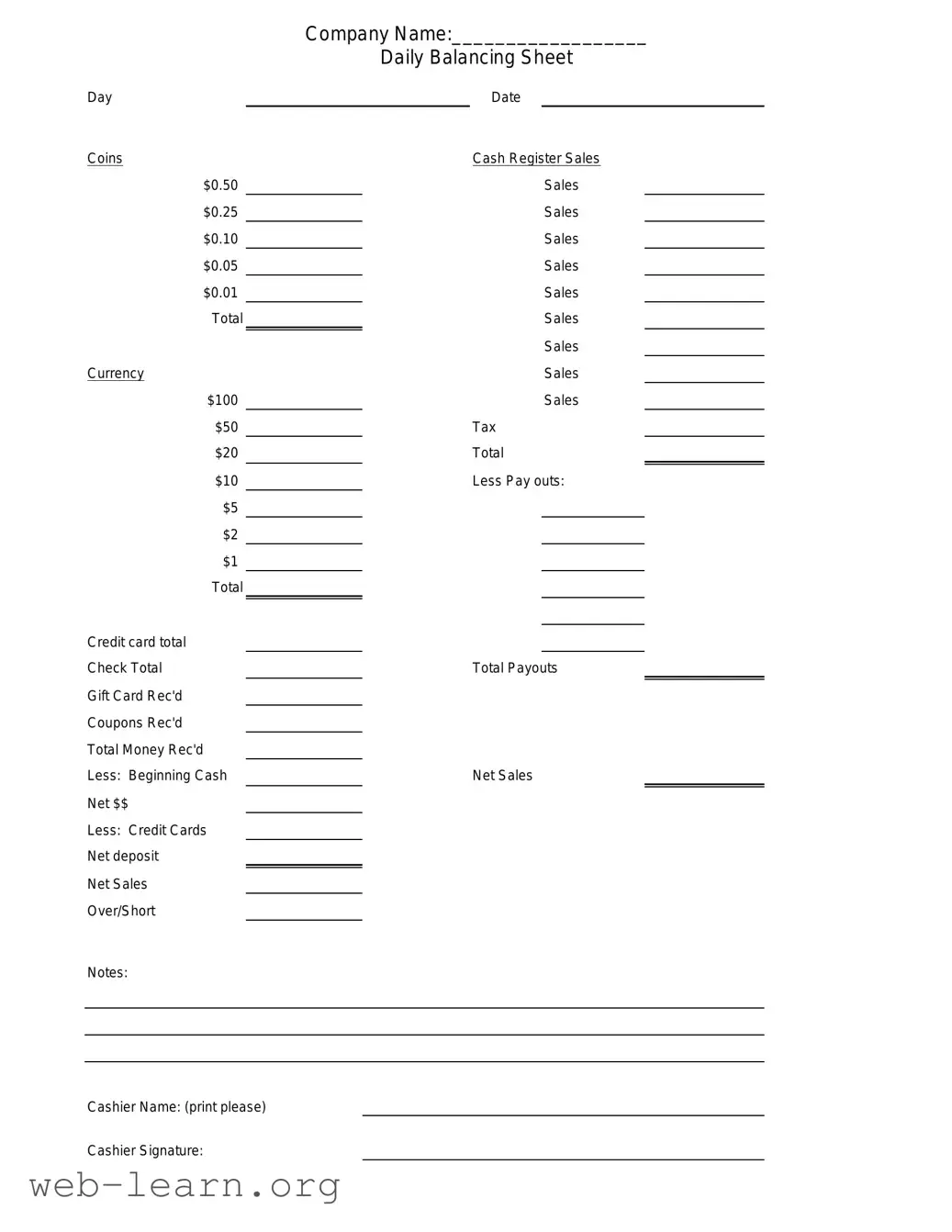The Cash Drawer Count Sheet is an essential tool that helps businesses track their cash on hand. While it may seem straightforward, many people make mistakes when filling out this form, hindering its effectiveness. Avoiding these common pitfalls can lead to more accurate cash management and accountability.
One frequent mistake is failing to double-check cash amounts. A quick glance at the total might be all it takes, but when individuals rush, errors in counting can occur. It’s important to take the time to thoroughly count the cash and confirm that the written numbers match the amount physically present in the drawer.
Another common error involves incorrect recording of the time and date. Some may overlook or miswrite this crucial information, which can lead to confusion during audits or when reviewing cash flow. Noting the time and date accurately ensures that each cash count can be traced back to a specific moment, facilitating better accountability.
People often forget to include all forms of cash, such as coins and small bills. A full cash drawer might contain various denominations, and failing to record every piece can lead to discrepancies. A comprehensive count will help avoid shortfalls and overages in reporting.
Using inconsistent methods for counting cash is another mistake. Whether one employs a specific order like highest to lowest bills or counting coins first, sticking to a method enhances accuracy. Inconsistencies can cause confusion leading to errors. It’s essential to maintain a standard approach every time the form is filled out.
Some individuals neglect to conduct a final review before submission. After writing everything down, taking an extra moment to review all entries is beneficial. This final check can catch mistakes that were missed in the initial filling process. It is a simple yet effective way to ensure accuracy.
Many also underestimate the importance of signature and approval. Leaving these fields empty means the count may not be officially validated. This small yet significant detail certifies that the count has been reviewed and agreed upon, helping maintain trust and transparency in cash handling.
Finally, poor organization of the cash drawer itself can complicate the counting process. If cash is crammed together or mixed up without any logical order, it can lead to inaccuracies. Keeping everything tidy and organized will facilitate a smoother counting experience and enhance the accuracy of the report.
By being mindful of these common mistakes, individuals can fill out the Cash Drawer Count Sheet form more effectively. Paying attention to detail, remaining consistent, and following best practices will yield better results and more reliable cash management.

